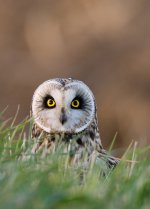So I will have my sigma 120-300 over the bank holiday weekend as it's os unit is going to be repaired next week
I had a quick try hand held using shutter 1/2000
The shots weren't really good to my eyes
I would say the birds today were about 30ft away minimum
They were also small birds.. From starling to crow
I found than none really seemed sharp and a couple that were kind of sharp only seemed to be at a crop where pixellation crept in
To get good shots I guess I just need to get closer due to me currently needing to crop into the pic to far
In thinking this will more likely be my sports and zoo (etc) lens. Which to be fair is its target
It's heavy but Tbh not as bad as I was expecting. I was out for a good while today and didn't notice the weight
I had a quick try hand held using shutter 1/2000
The shots weren't really good to my eyes
I would say the birds today were about 30ft away minimum
They were also small birds.. From starling to crow
I found than none really seemed sharp and a couple that were kind of sharp only seemed to be at a crop where pixellation crept in
To get good shots I guess I just need to get closer due to me currently needing to crop into the pic to far
In thinking this will more likely be my sports and zoo (etc) lens. Which to be fair is its target
It's heavy but Tbh not as bad as I was expecting. I was out for a good while today and didn't notice the weight



